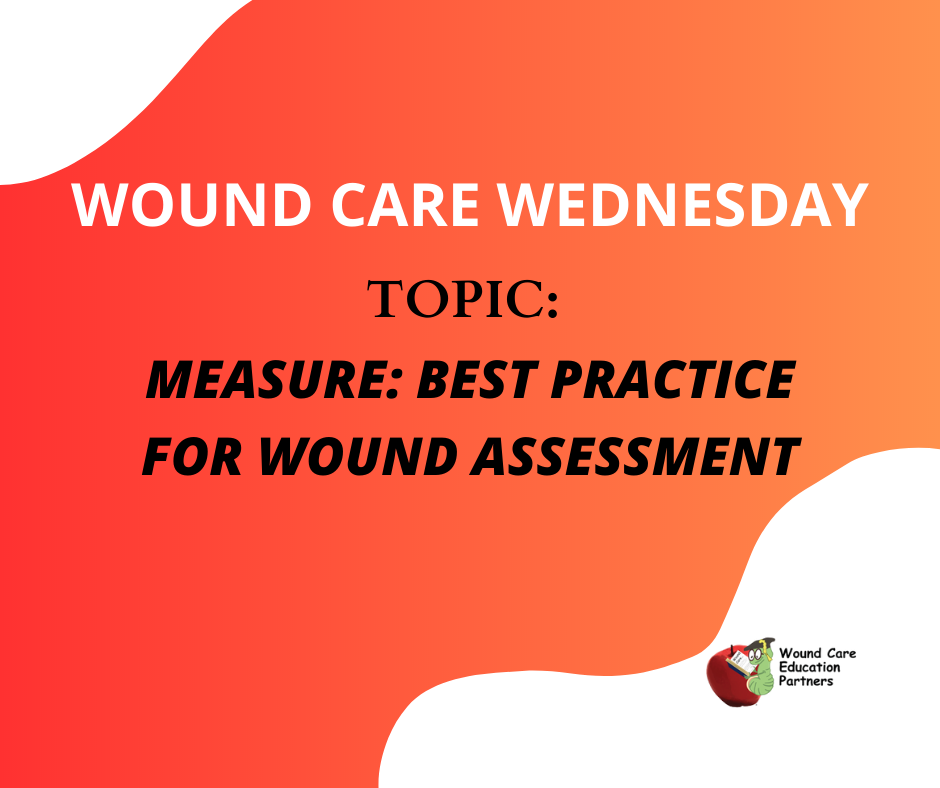Rx Pad
I. Measure: Best Practice for Wound Assessment
A consensus document by Keast et al. reviewed clinically useful wound measurement approaches. This evidence-based document provided an overview of principles and practice regarding chronic wound assessment in a simple mnemonic format. The text articulated effective management of a nonhealing wound based upon:
- Complete history
- Detailed initial assessment
- Analysis of probable causes
A. Measure
Key measurement observations include length, width, depth, and area. These factors are crit- ical parts of wound assessment and could have significant prognostic implications. Measurements should always be done in the same way: Document in centimeters. The length is the measurement from head to toe; the width is taken perpendicular to length and the depth (at deepest point). Use the analogy of the face of a clock to document points both inside the wound bed and on the periwound skin (Figures 1 and 2). For example, the patient’s head would be at 12 o’clock.
- Aforementioned measurements should include the following parameters:
- Document in centimeters
- Length (measurement head to toe)
- Width (perpendicular to length)
- Depth (at deepest point)
- Calculations of area and volume
- Tools:
- Linear measuring ruler
- Acetate wound tracings
- Computerized planimetry - Digital photography
Issue of inter-rater reliability with ruler method of measurement
Ways to improve “measures” utilizing the ruler technique need to establish consistency.
- Better if only one person performs mea- sures
- Repeat three times and take average value
- Use correct formulas for calculating surface area
- Avoid angles
Wound photographic grid films can provide valuable diagnostic measurements. In many clinical settings, both standard and Polaroid photography have been employed.(2) Griffin JE et al. found that the photographic and transparency methods provided equivalently reliable ulcer measurements.(2) Additionally, photographic methods in assessing wound surface areas in pressure ulcers provided reliable measurements. However, it should be noted that using this technique might not be feasible when dealing with wounds extending around a limb or various ulcers that present with extensive undermining(2)
Tracing the wound edges onto a transparency and using a metric grid to count the num- ber of square centimeters making up the wound is a commonly used but a time-consuming method. It should be noted that inaccuracies could arise from estimating partial squares.(1)
- Insert tip of probe to greatest depth and measure perpendicular distance to wound edge
- 15% inter-rater variability seen in depth measurement by this technique
Excerpted from Textbook of Chronic Wound Care: An Evidence-Based Approach to Diagnosis and Treatment with permission from the publisher.
Are you seeking a certification in wound care? Our 25.5 hour Wound Care Certification Prep Course and Refresher Training will prepare you to sit for almost any wound care certification exam.
When you subscribe to the blog, we will send you an e-mail when there are new updates on the site so you wouldn't miss them.



Comments